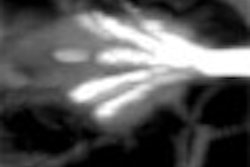Dear AuntMinnie Insider,
Virtual colonoscopy has a raging debate on its hands, one that seems all the more intriguing for having come from inside the VC community rather than any outside interest with an economic axe to grind.
The question is a simple one: Does VC find more true lesions when radiologists examine 2D images first and confirm abnormalities with 3D endoluminal views second -- or is it better the other way around?
To be sure, there are economic interests with a dog in this race: workstation and software developers reaching for technology and brand loyalty in the difficult task of finding colorectal polyps and cancer. Then there are the radiologists who get to do the studies, and the patients who must live with the results. Throw in the uneven nature of technological progress and human performance, fold in the vagaries of colon morphology, and it all adds up to a pretty good game.
This Insider examines the first crop of studies dedicated to primary 2D versus primary 3D virtual colonoscopy interpretation. At the 2004 RSNA meeting in Chicago, researchers from the U.S. and Europe tested primary 2D versus 3D interpretation head to head. The cohorts were small; the results nowhere near the final word on the subject. But there were surprises along the way, and conclusions Insider subscribers can read before anyone else, right here.
Also, in today's Virtual Colonoscopy Digital Community, Dr. Erik Paulson from Duke University Medical Center in Durham, NC, discusses the how and why of missed lesions in the recently concluded Rockey trial, which compared the sensitivity and specificity of virtual colonoscopy, conventional colonoscopy, and air-contrast barium enema. Lots of researchers recommend a thorough postmortem examination of their studies, but they don't all take the time to do it.




















